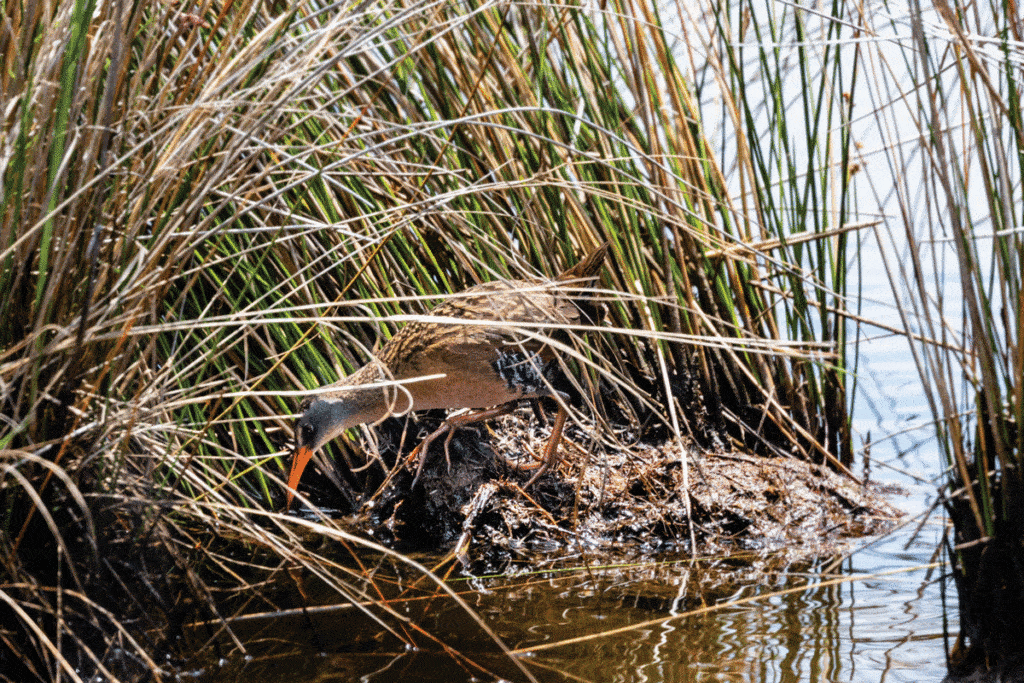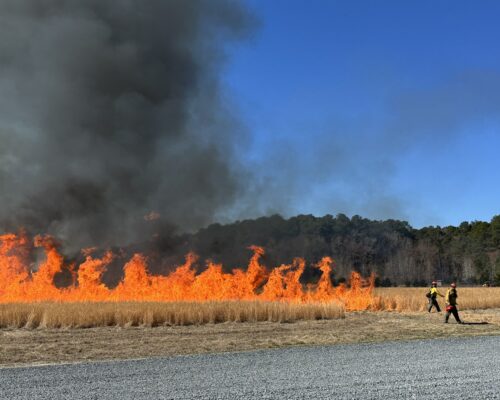I once hunted waterfowl with a guy who insisted there are basically only two types of birds: ducks and tweety birds. Of the latter group, it was clear he had no interest in discerning one species from another; I’d bet money he couldn’t tell the difference between a plover and a pelican. As to the first category, he also lumped all geese in with the ducks, in an effort to save time I imagine.
If you’ve spent any time in the Chesapeake marshes and tidal coastal flats, then you know the diversity of avian species is amazing. For the novice birder, sorting out similar-looking species takes a good deal of effort. For example, a black skimmer and an oyster catcher resemble each other, but you can tell the difference by the head coloration, as well as by the fact that an oyster catcher sports a deep orange bill with a dash of yellow at the tip, whereas a skimmer has a distinctly two-toned bill of orange and black.
Most duck hunters can readily tell the difference between a mallard and a pintail. (If they can’t, they ought to put the gun down until they learn.) More challenging for the bird hunter is differentiating the six species of rails that inhabit North America—the clapper, king, Virginia, yellow, black, and sora. Of these, the king, clapper, Virginia and sora are available for wing shooters in the Chesapeake and Mid-Atlantic regions. The hunting of these birds is managed by the respective state natural resource agencies in cooperation with the U.S. Fish and Wildlife Service. Like migratory waterfowl, rails are also protected by the Migratory Bird Treaty Act.
Clapper rails are the most common of the rails that inhabit the salt marshes on both sides of the Delmarva Peninsula. Virginia rails are similar in appearance, but prefer more brackish marsh habitats. I’ve seen three species of rails in Fishing Bay Wildlife Management Area, Blackwater Refuge, and the upper Patuxent River, though I still have my eye out for the region’s fourth species. Rail hunting is another wing shooting tradition rooted in the sport’s long history on the Chesapeake and Atlantic’s coastal bays, albeit one that isn’t much practiced these days. Back in the day, it was a favorite pastime of well-heeled gunners and locals alike, though for markedly different reasons. Included among its fans were Presidents Benjamin Harrison and Teddy Roosevelt.
As the 19th century drew to a close, it’s hard to estimate with any certainty how many rails were taken in coastal states, but experts say that number exceeded many hundreds of thousands annually. Sadly, it’s another example in a long list where the rapaciousness of bird hunters has left a stain on their legacy. Thankfully, that mindset has largely reversed itself. Most contemporary bird hunters are avid conservationists, contributing millions of dollars to conservation via purchases of shotguns, ammunition, and federal and state duck stamps.
Today, as they did more than a century ago, rail hunters either pole a shallow-draft skiff over the flooded marsh, or walk the marsh on foot to flush the birds out. The best hunting almost always takes place during a high tide. Running up on the birds with motors running is not only illegal, it is brazenly unethical.
I am intrigued by any salt-marsh-fueled adventure, so I reached out to Captain Pete Wallace of Chincoteague Hunting and Fishing Center Inc. (duckguide.com) to learn more about hunting seaside rails and to possibly book a trip. He’s an outfitter with decades of experience hunting rails on Virginia’s Eastern Shore.
Captain Wallace describes his method of rail hunting this way: Run the boat out into the marsh; find some birdy looking marsh point, preferably near a marsh gut (creek); and beach the skiff. Then, have your gunners approach the birds’ hide on foot, strung out in a line not unlike an upland bird hunt. Once flushed, take the bird in mid-flight. (That’s a very generous description of how a rail flies; they get airborne as easily as a waterlogged beanbag. Lacking webbed feet to assist in a water-borne takeoff, rails sort of flail along.)
What rails lack in aerial grace—according to Captain Wallace, they’re one of the easiest targets in all of bird-hunting due to their pedestrian aviation skills—they make up for in their ability to hide in plain sight.
“They’ll grasp submerged reeds with their feet and breathe with only their beaks out of the water,” he explains. “They can practically sprint across submerged vegetation, and they’ll (also) ease up to the gunwales of a boat and hide at the waterline.”
Wallace says rail hunting is best done at or about high tide. The higher the tide, the more successful the hunt. Tag on a Nor’easter or other storm, and odds for success increase. Of course, as is the case with all hunting or fishing excursions, no two days are the same and there are no guarantees of success.
What if the tides aren’t cooperative? In that case, Wallace says, the best way to hunt them is to “walk the bank of a 20- to 50-foot-wide creek that ends at a point and try to drive them to the point. Your best shots will be birds trying to fly across the creek. When you get to the end of your drive, work that area hard and wait. There will most often be birds there and they often take minutes to decide to swim or fly.” He adds that rather than ‘stalking’ the birds, you should be driving them.
“Walk at a brisk pace in a zigzag pattern. Two to three people will raise more birds than a single hunter,” he adds. And when you can see mud flats exposed by a falling tide, it’s game over.
To get another perspective, I talked with avid upland hunter John Culclasure, who hunted with Captain Wallace in fall 2018. A native of North Carolina who now lives in Richmond, he serves as the Southeastern States Assistant Director for the Congressional Sportsmen’s Foundation.
“They’re wily birds that can hide right under your nose. I also didn’t realize how well they flew; I missed plenty of shots,” he says. “While we didn’t hunt with a dog, the concept of finding and shooting flushed birds is similar to upland hunting. They also both involve a good deal of walking through thick vegetation.”
Because you’ll be trudging through soggy, semi-wet terrain, it’s recommended that your firearm is lightweight. A twenty-gauge shotgun with non-toxic loads (#6 or lighter; federal law prohibits lead shot) are appropriate. The recommended garb reminds me of the get-up I wear when marsh mucking: old tennis shoes laced tightly, long-sleeve shirt, and lightweight pants with long jock socks pulled over them so tiny critters can’t hitchhike on your ankles. Plan on walking a lot; being in decent shape makes the day more enjoyable.
When you drop your bird, don’t take your eyes off the spot where it falls. Even a dead rail is extremely hard to find in the marsh. Bring a cooler to preserve your birds for eating. Speaking of table fare, both Wallace and Culclasure said the birds are quite tasty, either fried or on the grill. Wallace adds that the drumsticks are as tasty as the breast meat.
For many of us, the charms of salt marshes are innumerable. Adding a slog through a marsh while you hunt for a wily bird only adds to the enjoyment.



